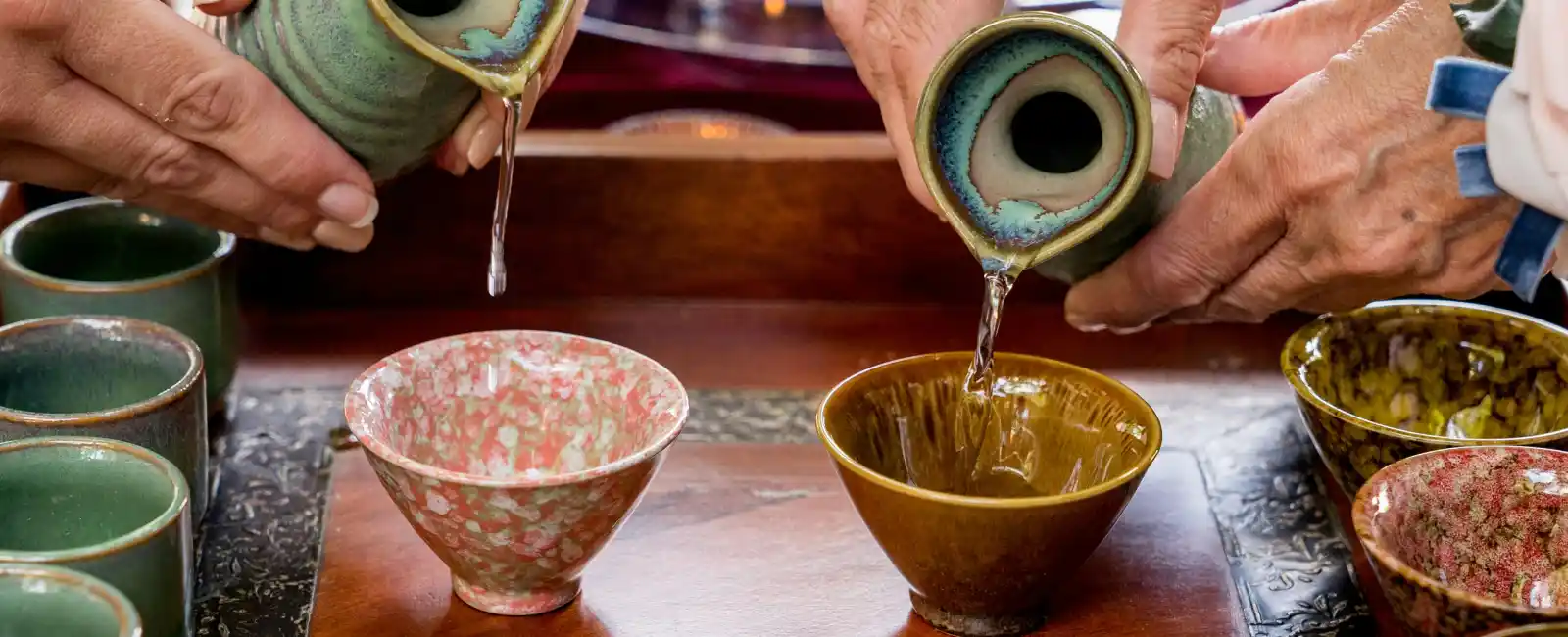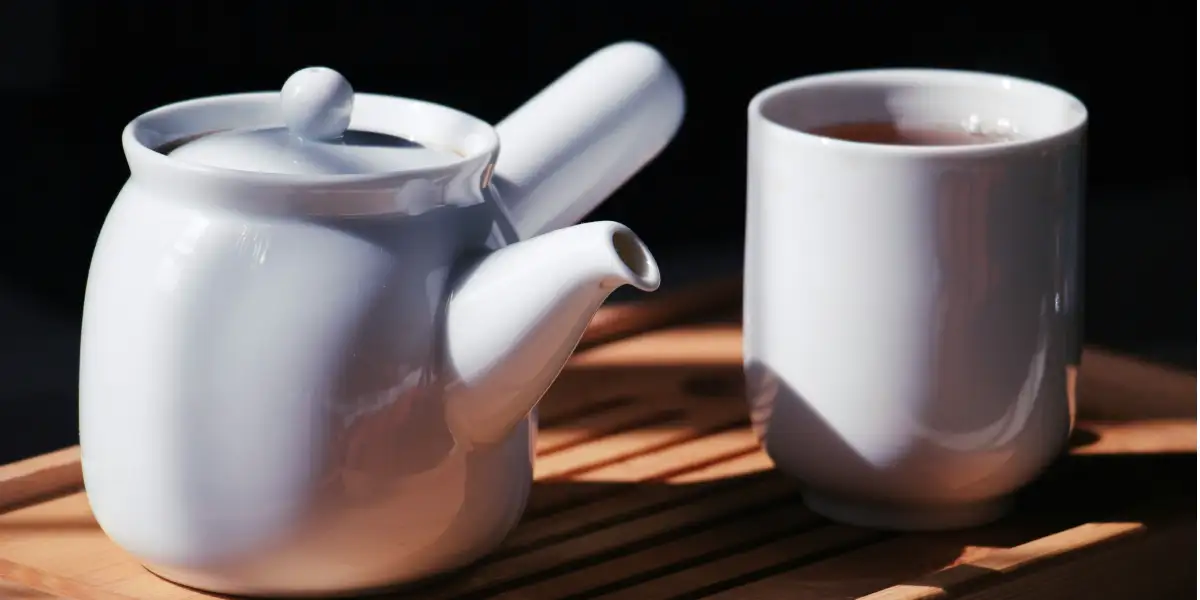Introduction to Japanese Arts and Crafts
Japanese arts and crafts embody centuries of tradition, skill, and a deep appreciation for beauty in simplicity. From intricate pottery to delicate textiles, each craft tells a story of the culture, history, and values of Japan. Whether you’re an art enthusiast or a curious traveler, exploring Japanese arts and crafts offers a unique window into the country’s rich heritage. This article delves into the history, significance, and role of Japanese arts and crafts, providing you with essential tips on how to plan your visit to experience these treasures firsthand and where to buy authentic pieces.
The Rich History of Japanese Arts and Crafts
Origins and Early Developments
Japanese arts and crafts trace their origins to prehistoric times, where early inhabitants created simple pottery and stone tools. The Jomon period, dating back to around 10,000 BCE, is particularly notable for its cord-marked pottery, which represents some of the earliest examples of artistic expression in Japan. As Japan began to engage with neighboring cultures, especially China and Korea, during the Yayoi and Kofun periods, new techniques and materials were introduced. This cultural exchange greatly influenced the evolution of Japanese crafts, leading to the development of more sophisticated pottery, metalwork, and textiles.
Influence of Buddhism and the Heian Period
The introduction of Buddhism to Japan in the 6th century brought profound changes to Japanese arts and crafts. Buddhist temples required elaborate decorations, leading to advancements in metalworking, sculpture, and painting. The Heian period (794-1185) marked a golden age for Japanese culture, with the aristocracy playing a crucial role in the patronage of the arts. This era saw the emergence of iconic crafts such as kyo-yuzen (Kyoto-style dyeing), lacquerware, and kiri-e (paper cutting), all of which continue to be celebrated today.
The Edo Period: A Flourishing of Artisanship
The Edo period (1603-1868) is often considered the zenith of Japanese arts and crafts. Under the rule of the Tokugawa shogunate, Japan experienced a period of peace and stability, which allowed arts and crafts to flourish. During this time, the production of ceramics, textiles, and lacquerware reached new heights. The influence of wabi-sabi, the aesthetic of finding beauty in imperfection and simplicity, became a defining characteristic of Japanese crafts. Raku pottery, sumi-e (ink wash painting), and woodblock printing are just a few examples of the crafts that gained prominence during this period.
Modern Era: Preserving Tradition in a Changing World
The Meiji Restoration in 1868 brought significant changes to Japan, as the country rapidly modernized and embraced Western influences. However, despite the pressures of industrialization, many traditional Japanese arts and crafts have been preserved. They continue to be practiced today. The Japanese government has played a vital role in this preservation effort. It has designated certain crafts and artisans as Living National Treasures. This designation not only honors the craftsmanship but also ensures that these ancient traditions are passed down to future generations.
The Role of Japanese Arts and Crafts in Contemporary Society
Cultural Identity and Heritage
Japanese arts and crafts serve as a vital link to the country’s cultural identity and heritage. These crafts are not merely decorative objects. They embody the values, beliefs, and way of life that have shaped Japan over millennia. For many Japanese people, engaging with traditional crafts connects them with their ancestors. It also helps preserve their cultural heritage. Whether it’s a delicate chawan (tea bowl) used in the tea ceremony or a beautifully woven kimono, each piece carries a sense of history. It also holds deep cultural significance.
Economic and Social Impact
In addition to their cultural importance, Japanese arts and crafts also play a significant role in the country’s economy. Many regions in Japan are known for their specific crafts, such as Kaga Yuzen silk dyeing in Kanazawa or Arita porcelain in Saga Prefecture. These crafts attract tourists and collectors from around the world, contributing to the local economy. Moreover, the production of traditional crafts provides employment opportunities and helps sustain rural communities.
The Artisanal Revival and Global Influence
In recent years, there has been a resurgence of interest in Japanese arts and crafts, both within Japan and internationally. This artisanal revival has been fueled by a growing appreciation for handmade, sustainable products in contrast to mass-produced goods. Japanese aesthetics, with their emphasis on minimalism and natural beauty, have resonated with global audiences, influencing design trends in fashion, interior decor, and even architecture. Collaborations between Japanese artisans and international designers have further elevated the profile of these traditional crafts on the world stage.
Planning Your Visit to Experience Japanese Arts and Crafts
Researching Japanese Arts and Crafts Destinations
When planning your trip to Japan to explore its arts and crafts, it’s essential to do some research. Focus on the specific regions known for particular crafts. Each area in Japan has its own unique craft traditions, making it a rich and diverse landscape for exploration. For example, Kyoto is renowned for its textile arts, including Nishijin-ori (brocade weaving) and Kyo-yuzen dyeing. If you’re interested in ceramics, visiting the towns of Mashiko in Tochigi Prefecture is a must. Imari in Saga Prefecture also offers an authentic experience of Japanese pottery.
To make the most of your visit, consider creating an itinerary that includes visits to workshops, museums, and galleries. Many craftspeople offer hands-on experiences, where you can learn the techniques behind these ancient crafts directly from the artisans themselves. Participating in a pottery class in Shigaraki or trying your hand at indigo dyeing in Tokushima can provide a deeper understanding of the skill involved. It also enhances your appreciation for the dedication required to produce these works of art
Visiting Museums and Cultural Institutions
Japan is home to numerous museums and cultural institutions that showcase the country’s rich tradition of arts and crafts. The Tokyo National Museum, for example, houses an extensive collection of ceramics, lacquerware, and textiles, offering a comprehensive overview of Japan’s artistic heritage. Similarly, the Kyoto National Museum provides insight into the region’s unique crafts, with exhibits dedicated to traditional textiles and ceramics.
For those interested in contemporary interpretations of traditional crafts, the 21_21 DESIGN SIGHT in Tokyo or the National Museum of Modern Art, Kyoto often feature exhibitions that explore the intersection of traditional craftsmanship and modern design. These institutions not only display the beauty of Japanese arts and crafts but also highlight their relevance in today’s world.
Shopping for Authentic Japanese Arts and Crafts
Buying authentic Japanese arts and crafts as souvenirs or gifts is a wonderful way to bring a piece of Japan back home. However, it’s important to know where to shop to ensure the quality and authenticity of the items you purchase.
One of the best places to buy traditional crafts is directly from the artisans themselves. Many craft towns and regions have workshops and small stores where you can purchase items that are handmade and unique. For example, visiting the Kiyomizu-yaki Danchi in Kyoto allows you to buy ceramics directly from the potters who made them. Similarly, in Kanazawa, you can find exquisite Kaga Yuzen silk scarves and kimono directly from the weavers.
If you’re in larger cities like Tokyo or Osaka, department stores such as Mitsukoshi, Isetan, or Takashimaya often have dedicated sections for traditional crafts. These stores curate high-quality items, ensuring that what you buy is both authentic and well-crafted. Additionally, specialty shops like Nakagawa Masashichi Shoten in Tokyo offer a wide range of handcrafted goods from all over Japan, from pottery to textiles and lacquerware.
For those looking to invest in more valuable pieces, visiting galleries that specialize in Japanese crafts can be an excellent option. These galleries often feature works by renowned artisans and provide certificates of authenticity. Wako in Tokyo’s Ginza district and Gallery Nichido are among the top destinations for collectors of Japanese art and crafts.
Participating in Local Festivals and Craft Fairs
One of the best ways to experience Japanese arts and crafts is by attending local festivals and craft fairs. These events offer a unique opportunity to see a wide variety of crafts in one place, often accompanied by demonstrations and performances that provide context and insight into the making of these items.
The Okinawa Craft Fair and the Mashiko Pottery Festival are two such events that attract both locals and tourists. These festivals not only showcase the crafts but also celebrate the culture and traditions that surround them. Participating in these events allows you to meet the artisans, learn about the history and techniques behind their work, and even purchase items directly from the creators.
Additionally, many regions hold seasonal festivals that feature traditional crafts as part of the celebrations. For example, the Takayama Autumn Festival in Gifu Prefecture includes displays of beautifully crafted floats known as yatai. These floats are decorated with intricate carvings and textiles. These festivals provide a vibrant and immersive experience. You can see how traditional crafts play a role in Japanese cultural celebrations.
Practical Tips for Buying and Bringing Back Japanese Arts and Crafts
When purchasing Japanese arts and crafts, it’s essential to consider practical aspects such as shipping and customs regulations. Many crafts, especially ceramics and larger items, can be fragile and challenging to transport. Most reputable stores and galleries in Japan offer shipping services, which can be a convenient option for ensuring that your purchases arrive home safely.
If you’re planning to bring items back with you, make sure to pack them carefully. Consider purchasing additional packing materials, such as bubble wrap and sturdy boxes, to protect your items during transit. It’s also a good idea to check with your airline regarding baggage policies and any additional fees for fragile items.
Customs Regulations and Considerations
When bringing Japanese arts and crafts back to your home country, it’s crucial to be aware of customs regulations to avoid any issues. Some countries have restrictions on certain materials, such as wood or ivory, which may be found in traditional crafts. Before purchasing check your country’s import regulations to ensure that you can legally bring the item home.
For valuable items, such as antiques or high-end crafts, consider obtaining an export certificate. In Japan, certain items, particularly those over 100 years old, may require documentation to prove their authenticity and legal status for export. Reputable sellers and galleries will often assist with this process, ensuring that your purchase complies with all legal requirements.
Additionally, keep receipts and any certificates of authenticity provided by the seller. These documents can be useful not only for customs purposes but also as proof of the item’s value and origin.
Exploring Online and Virtual Shopping Options
If you’re unable to travel to Japan or wish to explore Japanese arts and crafts further after your visit, many artisans and stores offer online shopping options. Websites such as Etsy, Japan Objects Store, and The Kyoto Journal Shop feature a wide selection of handmade crafts, from ceramics to textiles, available for international shipping.
Additionally, some workshops and galleries in Japan have adapted to the growing demand for virtual experiences. They now offer online tours, workshops, and shopping events. These virtual opportunities allow you to engage with Japanese arts and crafts from the comfort of your home. They provide a unique way to continue exploring and supporting traditional artisans.
Sustainable and Ethical Considerations
As you plan your purchase of Japanese arts and crafts, it’s important to consider sustainability and ethical practices. Supporting artisans who use environmentally friendly materials and traditional techniques ensures the preservation of these crafts. It also contributes to the broader movement toward sustainable consumption.
Look for crafts that use natural, locally sourced materials, such as indigo dye made from plants grown in Tokushima or pottery clay from regional quarries. Additionally, consider the social impact of your purchase. Many traditional crafts are produced by small, family-run workshops or cooperatives in rural areas. Buying directly from these artisans supports local economies and helps sustain these communities.Read more about Rural life tours.
Incorporating Japanese Arts and Crafts into Your Home
Once you’ve acquired your Japanese arts and crafts, the next step is to incorporate them into your home. Whether it’s a beautifully crafted tea set, a handwoven textile, or an intricately designed piece of pottery, these items can add a touch of Japanese elegance and cultural heritage to your living space.
Consider displaying your crafts in a way that honors their origin and craftsmanship. For example, place a ceramic tea bowl on a wooden shelf in a minimalist setting to let its simple beauty shine. Alternatively, frame and hang a silk kimono or textile as a piece of art to showcase the intricate patterns and colors characteristic of Japanese design.
Additionally, you can integrate Japanese arts and crafts into your daily life by using them in everyday activities. Drinking tea from a handmade ceramic cup adds a sense of ritual and appreciation for the craftsmanship behind these items. Serving food on a lacquerware tray further enhances this experience, allowing you to connect with the artistry and tradition embedded in each piece. By using and enjoying these crafts regularly, you bring a piece of Japan into your home. You also keep the tradition alive in your own way.
Conclusion: Embracing the World of Japanese Arts and Crafts
Japanese arts and crafts offer a profound connection to the country’s history, culture, and aesthetic principles. These crafts inspire and captivate people worldwide, from their ancient origins to their modern role. Whether planning a trip to Japan or exploring from afar, you have many ways to experience Japanese arts and crafts. There are countless opportunities to appreciate their beauty and skill.
Research and visit regions known for their craft traditions. Explore museums and galleries. Participate in festivals and purchase authentic items. These actions help you fully immerse yourself in the world of Japanese arts and crafts. Additionally, by considering sustainability, ethical practices, and thoughtful integration into your home, you contribute to preserving and appreciating these timeless traditions.
Through thoughtful exploration and mindful purchasing, you create lasting connections with Japanese arts and crafts. These beautiful traditions then continue to flourish in the modern world.




